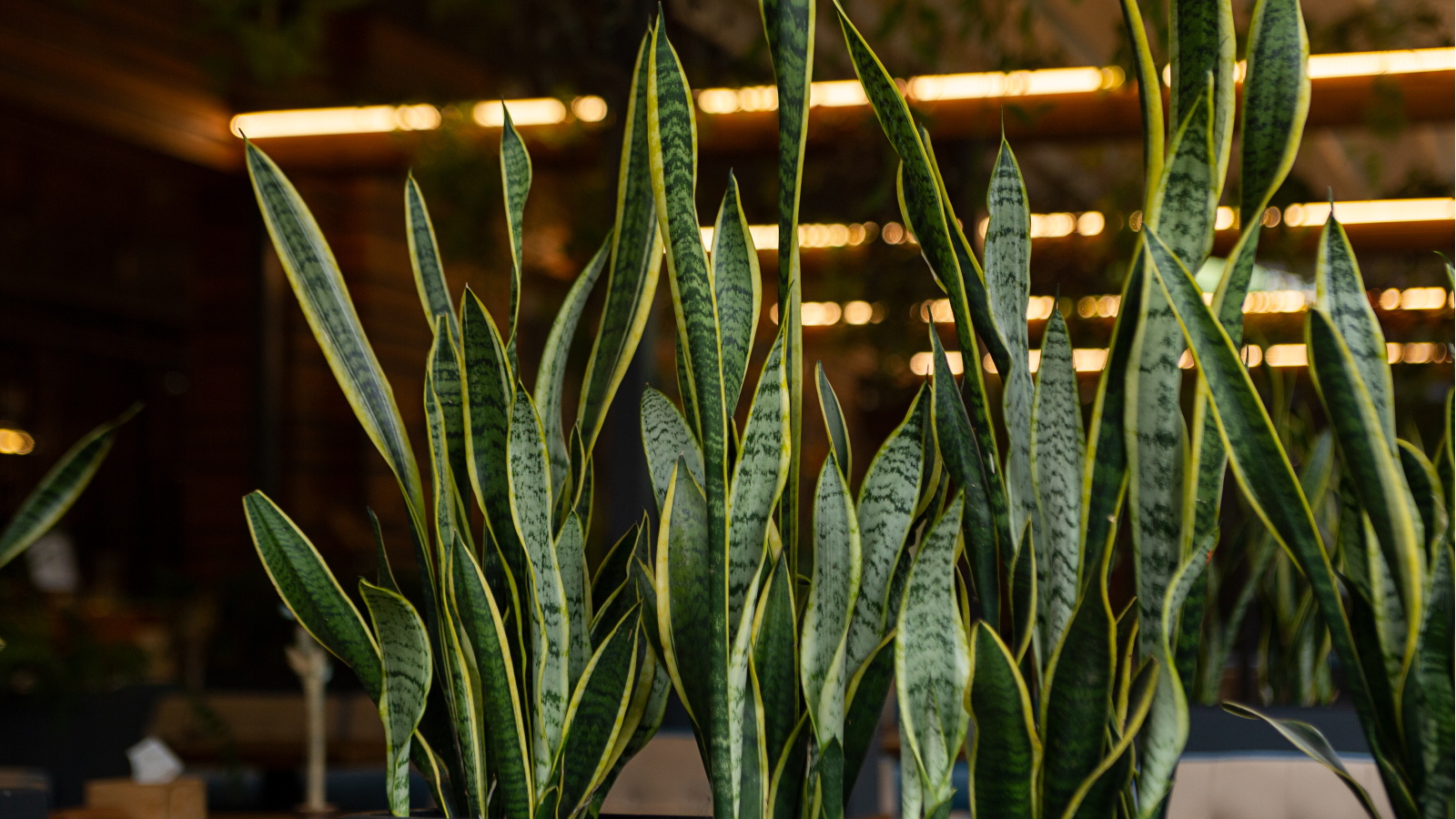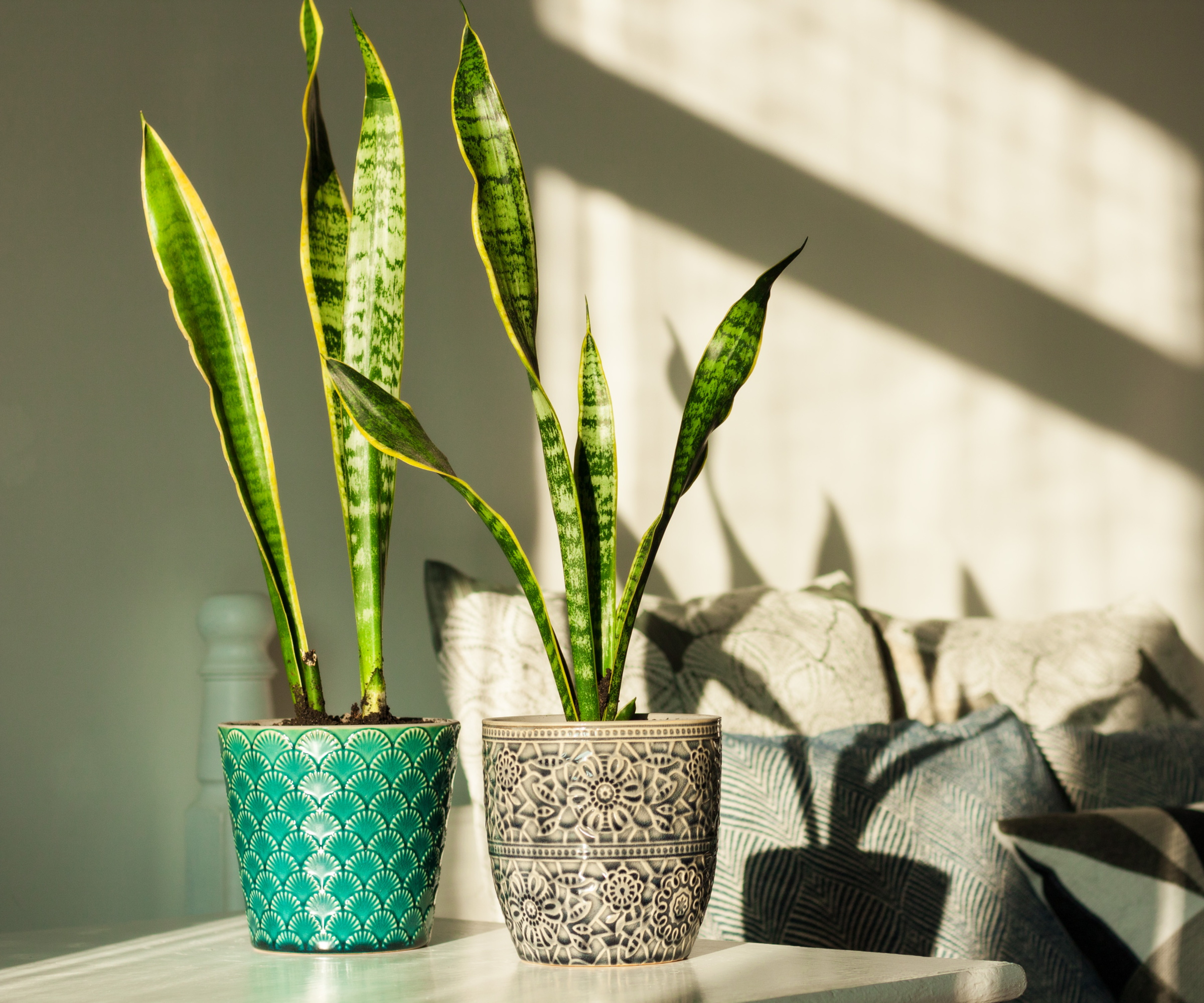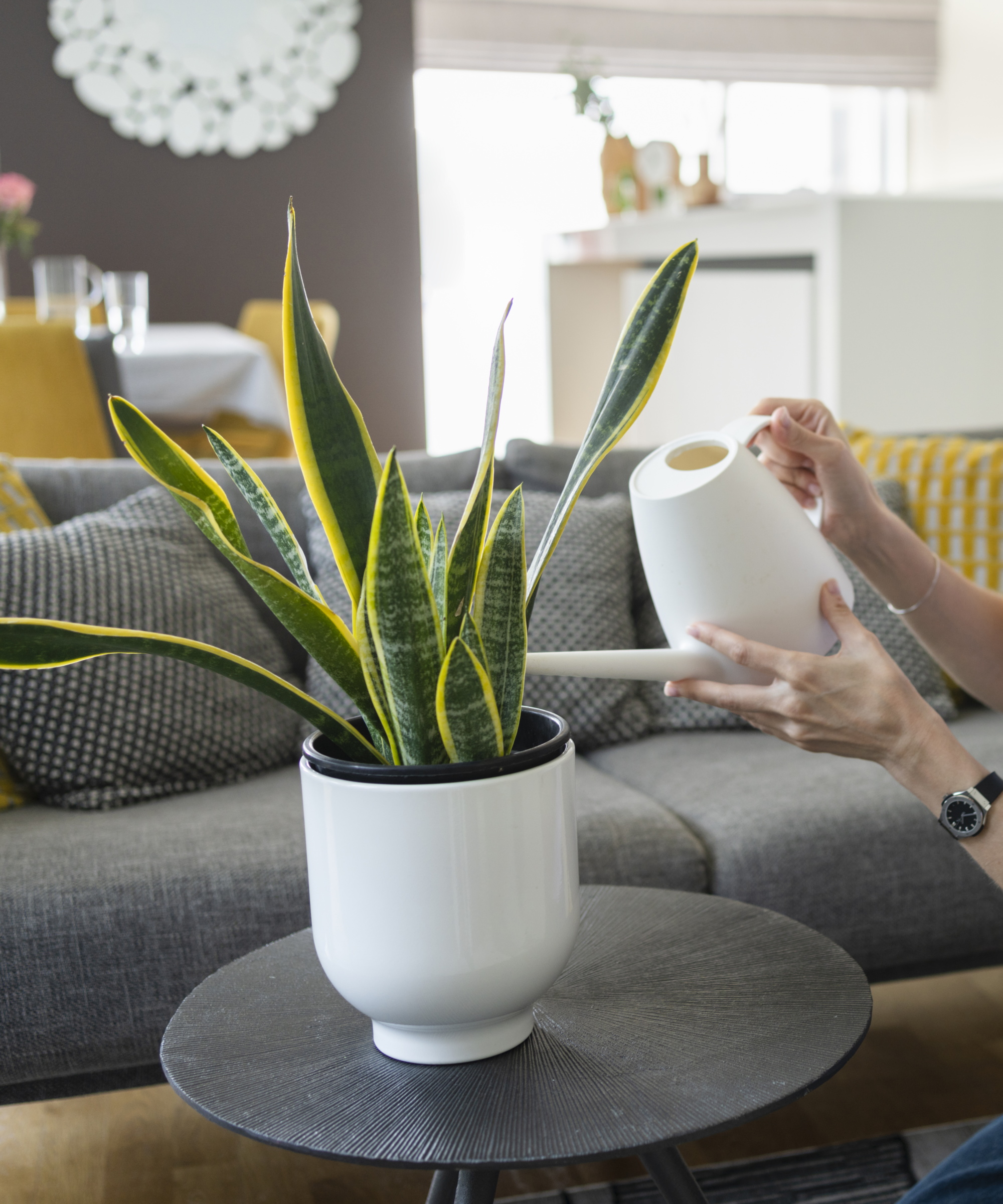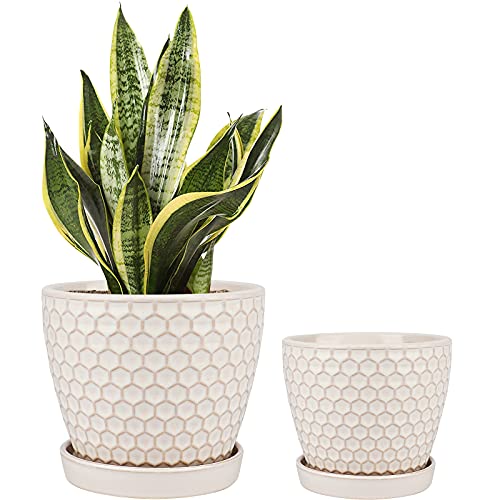If your snake plant is drooping, experts say this is the exact error you're making – and we have the solution to fix it
Snake plants are generally resilient, but incorrect care can cause their sword-shaped foliage to look worse for wear


Snake plants are one of the most popular indoor plants. Their structural foliage and resilience to neglect make them a staple for all houseplant collectors.
While caring for a snake plant is fairly straightforward and there aren't too many ways you can go wrong with them, you'll find your snake plant drooping if you make one very specific mistake. Unlike a snake plant turning yellow, there aren't many causes of a droopy snake plant. This is good news, however, because it means it can be quite easy to resolve.
Here, experts reveal what causes a snake plant to droop and where indoor gardeners are going wrong with these sword-shaped plants.

What causes a snake plant to droop?
Don't panic if you notice your snake plant drooping. It doesn't necessarily mean your snake plant is dying, but it does mean you need to amend the care you're giving it to bring it back to health. Find out below where you're going wrong.
Incorrect watering

Not knowing how often to water a snake plant is likely what is causing yours to droop. Both over and underwatering can be the culprit, and it's a common indoor plant mistake many houseplant owners make.
'Curling or drooping of the leaves usually is caused by an imbalance in soil moisture. Snake plants are very drought-tolerant, but even they have their limits,' explains Raffaele Di Lallo, indoor growing expert from Ohio Tropics.
You can get away with allowing your snake plant's soil to dry out almost entirely, as they are in fact a type of succulent. However, the problem is then leaving it in dry soil for too long. Once your soil moisture meter (from Amazon) indicates the soil is dry, it's time to water your houseplant.
Design expertise in your inbox – from inspiring decorating ideas and beautiful celebrity homes to practical gardening advice and shopping round-ups.
'On the opposite end, if the soil drainage is very poor and the soil stays wet for too long, this can easily cause houseplant root rot, which can also cause leaves to droop,' Raffaele explains.
For this reason, always use a well-draining snake plant potting mix - like this one from Amazon. Having the right pot for your snake plant can also aid drainage:
'Pots without drainage holes are also problematic because if you're not careful with watering, your roots can also rot,' Raffaele says.

Raffaele Di Lallo is the founder of the blog Ohio Tropics which focuses on the care of houseplants and other tropical plants, both indoors and outdoors. He has a large following on Instagram where he gives plant care tips and is the author of Houseplant Warrior: 7 Keys to Unlocking the Mysteries of Houseplant Care, published by Countryman Press. Raffaele is a member of the National Garden Bureau.
Will cold temperature cause a snake plant to droop?

While it can be easy to assume that cold might cause a snake plant to droop, it is actually a far more cold-tolerant houseplant than you might expect.
'Snake plants aren't too susceptible to damage from cold temperatures,' says Julie Bawden-Davis, indoor plant expert at Healthy Houseplants. 'It would take particularly cold temperatures, such as 55°F or lower for an extended period of time, for the snake plant to be affected,' she explains.
However, this isn't to say cold temperatures aren't a contributing factor to drooping. Raffaele notes that alongside poor drainage and incorrect moisture levels, cold temperatures 'can accelerate root rot.'
In the same vein, incorrect lighting isn't a cause behind your snake plant drooping. Snake plants are among indoor low light plants and can cope with not growing in the brightest of positions.
'Lack of light won’t necessarily cause drooping leaves, but it will cause the plant to slow down growth substantially and appear unhappy and unhealthy,' Julie explains. 'Prolonged periods of low light will lead to smaller leaves and less leaf growth overall,' she says.

Julie Bawden-Davis is a garden author and University of California Certified Master Gardener, who has written several gardening books, including Indoor Gardening The Organic Way. In addition to running HealthyHouseplants.com, she shares indoor gardening advice on her YouTube channel @HealthyHouseplants.
FAQs
How do you revive a droopy snake plant?
If your snake plant is drooping, it's likely explained by incorrect watering. Therefore, to revive a droopy snake plant you need to adjust your watering regime. Firstly, prune your snake plant with essential pruning tools to remove any droopy and damaged leaves, as these are unlikely to bounce back.
If your snake plant's soil is oversaturated, you might choose to then repot your snake plant in fresh soil. Going forward, only water your snake plant when it's soil has completely dried out. Take care not to let it sit in dry soil for a prolonged time, as this will cause it to droop once again.
Once your snake plant is revived to health, try propagating your snake plant to grow more of these structural beauties in your home. They make particularly good bedroom plants because snake plants can help you get better sleep.

Tenielle is a Gardens Content Editor at Homes & Gardens. She holds a qualification in MA Magazine Journalism and has over six years of journalistic experience. Before coming to Homes & Gardens, Tenielle was in the editorial department at the Royal Horticultural Society and worked on The Garden magazine. As our in-house houseplant expert, Tenielle writes on a range of solutions to houseplant problems, as well as other 'how to' guides, inspiring garden projects, and the latest gardening news. When she isn't writing, Tenielle can be found propagating her ever-growing collection of indoor plants, helping others overcome common houseplant pests and diseases, volunteering at a local gardening club, and attending gardening workshops, like a composting masterclass.
